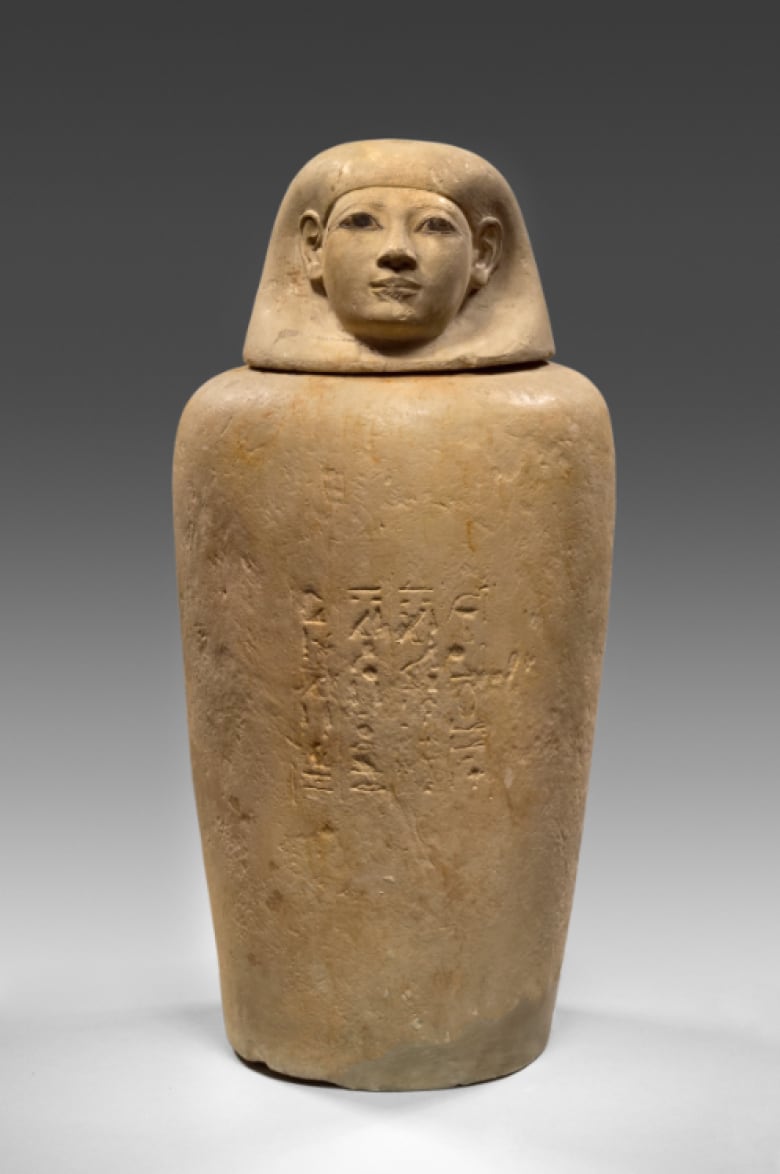
[ad_1]
As It Happens5:37What does a mummy smell like? Woodsy and sweet, with ‘note of pistachio’
If you thought ancient Egyptian mummies smelled like rot and decay, you’d be dead wrong.
Scientists have recreated the scent of the embalming fluid used to preserve a noblewoman more than 3,500 years ago — and they say it’s quite lovely, indeed.
“The dominant aroma is definitely a woody kind of pine-like scent,” archaeologist Barbara Huber told As It Happens host Nil Köksal.
“But it also has a hint of bitumen, a little bit of beeswax, something sweet, and you might even be able to pick up a fresh, citrusy note of pistachio. So it’s a very pleasant smell.”
Huber, a doctoral researcher at the Max Planck Institute of Geoanthropology in Germany, is the lead author of a new study that used a detailed analysis of ancient Egyptian mummification equipment to recreate an olfactory experience. It was published last month in the journal Scientific Reports.
They’ve dubbed their creation “Scent of Eternity” and it will be a part of an “an immersive, multisensory experience” at the Moesgaard Museum in Denmark next month.

The team extrapolated the scents by analyzng the compounds found in the residues of two canopic jars — vessels used to store a person’s mummified organs — from the tomb of a noblewoman called Senetnay.
They found traces of what they suspect are beeswax, plant oil, fats, bitumen, a balsamic substance and various types of tree resins, including cedar and pine.
The scientists who identified the materials then worked with French perfumer Carole Calvez and sensory museologist Sofia Collette Ehrich to recreate the scent in a lab.
“Working with the perfumer, I really learned that blending the different ingredients together is an art for itself,” Huber said. “And I need to say, like, this is not an absolute 100 per cent recreation. This is the interpretation of the perfume.”
Vast trade networks
University of Saskatchewan archaeologist Caroline Arbuckle MacLeod, who was not involved in the research, called it “a really excellent study.”
“There are so few scientific studies of the remnants of mummification materials that each one really is very significant,” Arbuckle MacLeod told CBC.
“It adds to our understanding of how these recipes might be different in different individuals and how they might have evolved over time.”
Arbuckle MacLeod, who studies the use of wooden coffins in ancient Egypt, was particularly intrigued that one of the jars contained the compound larixol — which the study says is suggestive of larch resin.
That’s surprising, she said, because larch trees grow primarily in Europe.
“That’s trade going across the Mediterranean into the depths of Europe, which at this point this, this is in the New Kingdom, that would be very early for that,” she said. “So this would be pretty phenomenal.”
In fact, most of the materials identified in the jars would have been imported from somewhere else.
“The ingredients in the balm make it clear that the ancient Egyptians were sourcing materials from beyond their realm from an early date,” Nicole Boivin, a senior researcher on the project, said in a press release.
Don’t show up stinky to the afterlife
Huber says it’s not surprising ancient Egyptians would used such pleasant smells in their balms, given what we know about their beliefs.
“The main purpose of mummification was preserving the body for the afterlife. But it was also very important to the ancient Egyptians not to stink in the afterlife,” she said.
“When the body is intact, then your soul can come back into the body in the afterlife, and you can live on for eternity. And if your body decays — and they have really vivid pictures about that in their ancient texts — they say the body becomes countless worms.”

And scent, Arbuckle MacLeod says, was a very important part of ancient Egyptian culture.
Noblewomen were known to wear scented cones, and perfumes were key elements in many rituals and traditions, including those performed to honour the dead.
“There’s lots of texts in ancient Egypt that make it clear that scent was a really evocative sense for them and they would use it in different ways in the temples and in tombs it to evoke different spiritual elements,” she said.
Huber hopes the element of smell at the Moesgaard Museum will bring history to life in a very visceral way for people.
“You’re not just going there to see different things or read it or hear it on an audio guide. You should be able to also kind of participate, and be transported back to ancient Egypt by yourself, and also get different recollections and memories that are personal, perhaps,” she said.
Asked if she’d consider bottling and selling the Scent of Eternity as a perfume or diffuser, she laughed.
“I could totally see that,” she said. “But it’s a little bit out of my comfort zone. I think I will stick to the science and then let other people market it.
[ad_2]
Source link

التعليقات